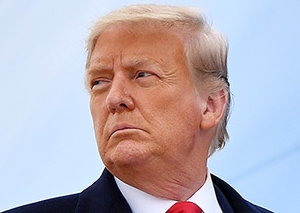
The U.S. military officially shot down a second spy balloon off the coast of South Carolina on Saturday. The spy balloon originated in China and entered U.S. airspace on Jan. 28.
The surveillance balloon was shot down around 2 p.m. off the coast of Surfside Beach, SC.
Cell phone video shows 2 chemtrails — one was from a missile launched at the balloon by a U.S. fighter jet over the Atlantic Ocean. The balloon exploded on impact with the missile and a cloud of gas is seen in the sky as the balloon collapsed and drifted toward the ocean.
President Biden reportedly gave the order to shoot down the balloon on Wednesday.
“I ordered the Pentagon to shoot it down on Wednesday as soon as possible … they successfully took it down,” Biden told reporters on Saturday.
Defense Secretary Lloyd Austin said the spy balloon was shot down within 12 nautical miles of U.S. territorial waters. He said the destruction of the spy balloon was “deliberate and lawful,” and he thanked Canadian NORAD for their help in tracking the balloon across North America.
The news comes a day after a spy balloon was reportedly shot down near Billings, Montana on Friday. The explosion was followed by increased military helicopters in the area, seemingly searching for wreckage.
Montana residents posted videos of a falling object followed by a long chemtrail. They also reported seeing Sikorsky Black Hawk military helicopters and fighter jets in the skies.
Conspiracy theorists claim the chemtrail is evidence of a deadly virus being released into the atmosphere. Frightened residents were seen packing their vehicles and fleeing Billings on Friday.
Ok, so here’s what I just caught I few minutes ago out my window. I saw a jet go by so fast and then explosion in the sky. Holy crap! Billings MT. pic.twitter.com/swr8ERC6pf
— Dolly Moore (@MMtTreasures) February 4, 2023
A Chinese Foreign Ministry statement on Thursday said the balloon was a civilian airship used for weather research, “mainly meteorological purposes.”
There are unconfirmed reports of “multiple” balloons in geographic locations near America. Experts say the balloons likely hold nuclear detectors to pinpoint America’s hidden nuclear silos that can’t be seen by satellites in space.
A third spy balloon was confirmed over Latin America on Friday. Experts say at least three spy balloons are required to triangulate the exact positions of hidden nuclear silos underground.
Balloons are cheaper to deploy than satellites. They are easily maneuverable remotely and can go deep into enemy territory. Due to their size they are undetected by radar and difficult to shoot down at 68,000 feet — twice the average altitude of a passenger airliner.
?#BREAKING: The US military has officially shot down the Chinese balloon
?#MyrtleBeach | #SC
Just seconds ago the US military has officially shot down the Chinese surveillance balloon after it traveled thousands of miles across open seas and the United States for 4 long days pic.twitter.com/sThESrLqvW
— R A W S A L E R T S (@rawsalerts) February 4, 2023
Chinese spy balloon shot down. #ChineseSpyBalloon pic.twitter.com/2LNUUf0Qpr
— Devon Pace (@elitedevon) February 4, 2023
BREAKING:
George Santos announces that he single handedly shot down the China spy balloon and averted any crisis.What a guy…….
— Fin FoxGuy – I'm Staying for Dems 2024 (@FinFox2) February 4, 2023





